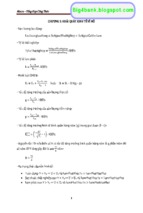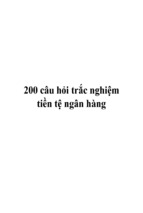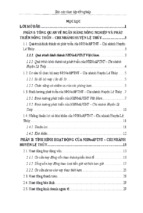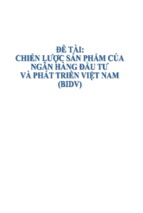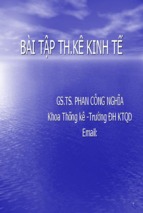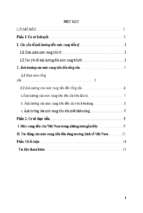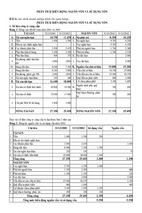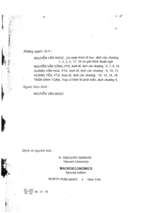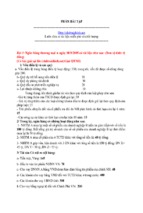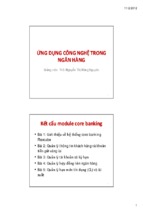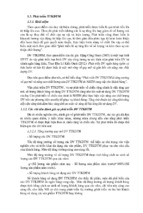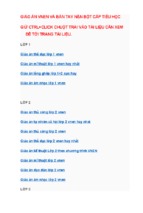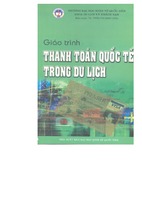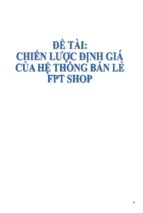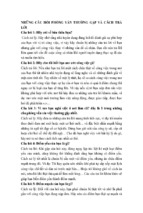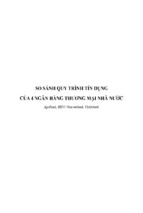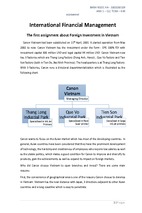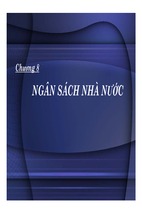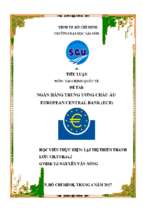Energy Efficient Cooperative Communication
by
Jie Yang
A Dissertation
Submitted to the Faculty
of the
WORCESTER POLYTECHNIC INSTITUTE
in partial fulfillment of the requirements for the
Degree of Doctor of Philosophy
in
Electrical and Computer Engineering
by
February 9, 2009
APPROVED:
Professor D. Richard Brown III, Major Advisor
Professor Wenjing Lou
Professor Andrew G. Klein
Professor Daniel J. Dougherty
Abstract
This dissertation studies several problems centered around developing a better
understanding of the energy efficiency of cooperative wireless communication systems.
Cooperative communication is a technique where two or more nodes in a wireless
network pool their antenna resources to form a “virtual antenna array”. Over the
last decade, researchers have shown that many of the benefits of real antenna arrays,
e.g. spatial diversity, increased range, and/or decreased transmission energy, can be
achieved by nodes using cooperative transmission. This dissertation extends the
current body of knowledge by providing a comprehensive study of the energy efficiency
of two-source cooperative transmission under differing assumptions about channel
state knowledge, cooperative protocol, and node selfishness.
The first part of this dissertation analyzes the effect of channel state information
on the optimum energy allocation and energy efficiency of a simple cooperative transmission protocol called “orthogonal amplify-and-forward” (OAF). The source nodes
are required to achieve a quality-of service (QoS) constraint, e.g. signal to noise ratio
or outage probability, at the destination. Since a QoS constraint does not specify a
unique transmit energy allocation when the nodes use OAF cooperative transmission,
minimum total energy strategies are provided for both short-term and long-term QoS
constraints. For independent Rayleigh fading channels, full knowledge of the channel
state at both of the sources and at the destination is shown to significantly improve the
energy efficiency of OAF cooperative transmission as well as direct (non-cooperative)
transmission. The results also demonstrate how channel state knowledge affects the
minimum total energy allocation strategy. Under identical channel state knowledge
ii
assumptions, the results demonstrate that OAF cooperative transmission tends to
have better energy efficiency than direct transmission over a wide range of channel
conditions.
The second part of this dissertation focuses on the development of an opportunistic
hybrid cooperative transmission protocol that achieves increased energy efficiency by
not only optimizing the resource allocation but also by selecting the most energy efficient cooperative transmission protocol from a set of available protocols according to
the current channel state. The protocols considered in the development of the hybrid
cooperative transmission protocol include compress-and-forward (CF), estimate-andforward (EF), non-orthogonal amplify-and-forward (NAF), and decode-and-forward
(DF). Instantaneous capacity results are analyzed under the assumption of full channel state knowledge at both of the sources and the destination node. Numerical results
are presented showing that the delay limited capacity and outage probability of the
hybrid cooperative transmission protocol are superior to that of any single protocol
and are also close to the cut-set bound over a wide range of channel conditions.
The final part of this dissertation focuses on the issue of node selfishness in cooperative transmission. It is common to assume in networks with a central authority,
e.g. military networks, that nodes will always be willing to offer help to other nodes
when requested to do so. This assumption may not be valid in ad hoc networks operating without a central authority. This section of the dissertation considers the effect
selfish behavior on the energy efficiency of cooperative communication systems. Using tools from non-cooperative game theory, a two-player relaying game is formulated
and analyzed in non-fading and fading channel scenarios. In non-fading channels, it
is shown that a cooperative equilibrium can exist between two self-interested sources
given that the end of the cooperative interaction is uncertain, that the sources can
iii
achieve mutual benefit through cooperation, and that the sources are sufficiently patient in the sense that they value future payoffs. In fading channels, a cooperative
conditional trigger strategy is proposed and shown to be an equilibrium of the twoplayer game. Sources following this strategy are shown to achieve an energy efficiency
very close to that of a centrally-controlled system when they are sufficiently patient.
The results in this section show that cooperation can often be established between two
purely self-interested sources without the development of extrinsic incentive mechanisms like virtual currency.
iv
Acknowledgements
First, I feel incredibly fortunate to have Professor D. Richard Brown III as my advisor.
He is the most smart, hardworking, passionate researcher I’ve ever met and the best
teacher ever. He not only has a profound understanding in his area but also can turn
his knowledge into easily understandable words. I’m forever in debt to him for the
time and patience in helping me complete this dissertation and the research behind
it, especially during the time while I’m pregnant. Without his support and constant
guidance, I could not have finished this dissertation. His endless pursuit of perfection
in his work and high standard of self-discipline set up a role model for me. I’m also
very lucky to meet his wife Jen and lovely son, Max, who make me feel the warmth
of home while living abroad without most of my family and friends.
Besides my advisor, I am thankful to the rest of my dissertation committee: Professor Wenjing Lou, Professor Andrew G Klein, and Professor Daniel J. Dougherty,
who asked me challenging questions and gave insightful comments on my work.
I want to thank Professor H. Vincent Poor of Princeton University for inviting
me to be a visiting student for the 2007-2008 academic year. I also want to thank
Professor Elza Erkip of Polytechnic University and Dr. Deniz G¨nd¨z of Princeton
u u
University for their help and insightful comments that led to many of the results in
Chapter 4.
I wish to thank my graduate labmates, Tyson, Tony, Samant, Jim, Qian and
Boyang. Thank you for taking the time to discuss my research problems and help me
prepare presentations. More importantly, thank you all for creating an intellectual
and enjoyable atmosphere in the lab.
Thank you, Mom and Dad. Your selfless love and unconditional support help me
v
to be where I am today. Your love is the most valuable fortune that I have in the
world.
Most importantly, I want to say thanks to Kai, for always caring about me and
standing by my side.
Finally, I am grateful for the financial support of the National Science Foundation
through grant CCF-0447743 and the financial support of the Electrical and Computer
Engineering Department of Worcester Polytechnic Institute.
vi
Contents
List of Figures
ix
List of Tables
xii
1 Introduction
1.1 Motivation . . . . . . . . . . . . . . . . . . . . . . . . . . . .
1.2 Dissertation Overview . . . . . . . . . . . . . . . . . . . . .
1.3 Dissertation Contributions . . . . . . . . . . . . . . . . . . .
1.3.1 Optimal Resource Allocation for OAF (Chapter 3) .
1.3.2 Cooperative Protocol Comparison (Chapter 4) . . . .
1.3.3 Dynamic Cooperative Protocol Selection (Chapter 4)
1.3.4 Selfish Cooperation (Chapter 5) . . . . . . . . . . . .
1.4 Table of Abbreviations . . . . . . . . . . . . . . . . . . . . .
.
.
.
.
.
.
.
.
.
.
.
.
.
.
.
.
.
.
.
.
.
.
.
.
.
.
.
.
.
.
.
.
.
.
.
.
.
.
.
.
1
1
8
10
10
11
13
13
15
2 Background
2.1 Rayleigh Fading Channels . . . . . . . . . . . . . . . . .
2.2 A Short Introduction to Diversity Techniques . . . . . .
2.3 A History of User Cooperation Diversity . . . . . . . . .
2.4 Cooperative Transmission Protocols . . . . . . . . . . . .
2.4.1 Orthogonal Amplify and Forward (OAF) . . . . .
2.4.2 Non-Orthogonal Amplify and Forward (NAF) . .
2.4.3 Decode and Forward (DF) . . . . . . . . . . . . .
2.4.4 Opportunistic Decode and Forward (ODF) . . . .
2.4.5 Compress and Forward (CF) . . . . . . . . . . . .
2.4.6 Estimate and Forward (EF) . . . . . . . . . . . .
2.5 Performance Metrics . . . . . . . . . . . . . . . . . . . .
2.5.1 Signal to Noise Ratio (SNR) . . . . . . . . . . . .
2.5.2 Capacity . . . . . . . . . . . . . . . . . . . . . . .
2.5.3 Instantaneous and Delay-Limited Capacity (DLC)
2.5.4 Outage Probability . . . . . . . . . . . . . . . . .
.
.
.
.
.
.
.
.
.
.
.
.
.
.
.
.
.
.
.
.
.
.
.
.
.
.
.
.
.
.
.
.
.
.
.
.
.
.
.
.
.
.
.
.
.
.
.
.
.
.
.
.
.
.
.
.
.
.
.
.
.
.
.
.
.
.
.
.
.
.
.
.
.
.
.
16
16
20
23
25
27
28
29
30
31
32
33
33
33
34
35
.
.
.
.
.
.
.
.
.
.
.
.
.
.
.
.
.
.
.
.
.
.
.
.
.
.
.
.
.
.
vii
3 Optimum Energy Allocation for Orthogonal Amplify-and-Forward
Protocol
3.1 Background . . . . . . . . . . . . . . . . . . . . . . . . . . . . . . . .
3.2 System Model . . . . . . . . . . . . . . . . . . . . . . . . . . . . . . .
3.3 Destination Processing and SNR Analysis . . . . . . . . . . . . . . .
3.4 Optimum Energy Allocation for OAF with Full CSIT/CSIR . . . . .
3.4.1 Optimum Energy Allocation p = 0 . . . . . . . . . . . . . . .
3.4.2 Optimum Energy Allocation p > 0 . . . . . . . . . . . . . . .
3.5 Optimum Energy Allocation for OAF with Full CSIT and No CSIR .
3.6 Optimum Energy Allocation for OAF with No CSIT and Full CSIR .
3.6.1 Outage Probability Bounds Analysis . . . . . . . . . . . . . .
3.7 Optimum Energy Allocation for OAF with No CSIT and No CSIR . .
3.8 Numerical Results . . . . . . . . . . . . . . . . . . . . . . . . . . . . .
3.8.1 Full CSIT/CSIR versus no CSIT/CSIR . . . . . . . . . . . .
3.8.2 Full CSIT/CSIR versus full CSIT/no CSIR . . . . . . . . . .
3.8.3 Full CSIT/no CSIR versus no CSIT/no CSIR . . . . . . . . .
3.9 Conclusions . . . . . . . . . . . . . . . . . . . . . . . . . . . . . . . .
37
38
39
42
44
44
48
49
53
54
57
59
60
65
67
72
4 Optimum Energy Allocation for Different Cooperative Protocols
4.1 Problem Formulation . . . . . . . . . . . . . . . . . . . . . . . . . . .
4.2 Hybrid Optimum Energy Allocation with Full CSIT . . . . . . . . . .
4.2.1 Background . . . . . . . . . . . . . . . . . . . . . . . . . . . .
4.2.2 Delay-limited Capacity Analysis . . . . . . . . . . . . . . . . .
4.2.3 Non-orthogonal Amplify and Forward . . . . . . . . . . . . . .
4.2.4 Compress and Forward Relaying . . . . . . . . . . . . . . . . .
4.2.5 Hybrid Opportunistic Optimum Energy Allocation . . . . . .
4.2.6 Upper Bound to the Delay-Limited Capacity . . . . . . . . . .
4.3 Optimum Energy Allocation to Minimize Outage Probability . . . . .
4.4 Numerical Results . . . . . . . . . . . . . . . . . . . . . . . . . . . . .
4.4.1 Delay-limited Capacity Results . . . . . . . . . . . . . . . . .
4.4.2 Outage Probability Results . . . . . . . . . . . . . . . . . . .
4.5 Conclusions . . . . . . . . . . . . . . . . . . . . . . . . . . . . . . . .
74
76
78
78
79
80
83
85
85
86
87
87
93
94
5 Energy Efficiency of Selfish Cooperation
5.1 Background . . . . . . . . . . . . . . . .
5.2 System Model . . . . . . . . . . . . . . .
5.2.1 Two-user Relaying Game . . . . .
5.3 Fixed channels Analysis . . . . . . . . .
5.4 Fading channels Analysis . . . . . . . . .
5.4.1 Relaying Game with Full CSIT .
5.4.2 Relaying Game with No CSIT . .
5.5 Numerical Results . . . . . . . . . . . . .
.
.
.
.
.
.
.
.
.
.
.
.
.
.
.
.
.
.
.
.
.
.
.
.
.
.
.
.
.
.
.
.
.
.
.
.
.
.
.
.
.
.
.
.
.
.
.
.
.
.
.
.
.
.
.
.
.
.
.
.
.
.
.
.
.
.
.
.
.
.
.
.
.
.
.
.
.
.
.
.
.
.
.
.
.
.
.
.
.
.
.
.
.
.
.
.
.
.
.
.
.
.
.
.
.
.
.
.
.
.
.
.
.
.
.
.
.
.
.
.
.
.
.
.
.
.
.
.
100
101
104
107
111
114
115
120
120
viii
5.6
Conclusions . . . . . . . . . . . . . . . . . . . . . . . . . . . . . . . . 126
6 Conclusions and Future Work
127
6.1 Summary . . . . . . . . . . . . . . . . . . . . . . . . . . . . . . . . . 127
6.2 Future Research Directions . . . . . . . . . . . . . . . . . . . . . . . . 130
Bibliography
132
A Jakes Flat Fading Simulator Matlab Code
146
B Optimum Energy Allocation of Orthogonal amplify-and-forward Matlab Code
148
C Optimum Energy Allocation of Compress and Forward Matlab Code158
D Fixed Channel Matlab Code
164
ix
List of Figures
1.1
1.2
1.3
1.4
1.5
2.1
2.2
2.3
2.4
2.5
2.6
2.7
2.8
3.1
3.2
3.3
3.4
3.5
3.6
3.7
Multipath fading. . . . . . . . . . . . . . . . . . . . . . . . . . . . . .
Flat fading example using a Jakes isotropic scattering fading channel
simulator with mobile velocity 30 meters/second and carrier frequency
900MHz. . . . . . . . . . . . . . . . . . . . . . . . . . . . . . . . . . .
Independent flat fading example using a Jakes isotropic scattering fading channel simulator with mobile velocity 30 meters/second and carrier frequency 900MHz. The red dashed line follows the better of the
two channels. . . . . . . . . . . . . . . . . . . . . . . . . . . . . . . .
Canonical cooperative models. Cooperative links are shown as dashed
lines. This dissertation is focused on two-source transmit cooperation.
Transmit cooperation versus multi-hop transmission. . . . . . . . . .
A MIMO system with three transmit antennas and two receive antennas.
Relay channel. . . . . . . . . . . . . . . . . . . . . . . . . . . . . . . .
Orthogonal amplify and forward (OAF) protocol schedule. . . . . . .
Non-orthogonal amplify and forward (NAF) protocol schedule. . . . .
Decode and forward (DF) protocol schedule. . . . . . . . . . . . . . .
Decode and forward (DF) protocol schedule with unequal time allocation between the source and relay. . . . . . . . . . . . . . . . . . . . .
Opportunistic decode and forward (ODF) protocol schedule. . . . . .
Compress and forward (CF) protocol schedule. . . . . . . . . . . . . .
Two-source one-destination cooperative transmission system model. .
Orthogonal amplify-and-forward protocol. . . . . . . . . . . . . . . .
One-source, one-relay, one-destination model. . . . . . . . . . . . . . .
The intuitive proof of proposition 1. . . . . . . . . . . . . . . . . . . .
∗
Cumulative distribution function of Etot . . . . . . . . . . . . . . . . .
Outage probability bounds in independent Rayleigh fading. . . . . . .
Outage probability bounds in independent Rayleigh fading for the case
with no CSIT and no CSIR. . . . . . . . . . . . . . . . . . . . . . . .
2
3
4
5
6
22
23
28
28
29
30
31
32
40
40
41
47
49
56
60
x
3.8
3.9
3.10
3.11
3.12
3.13
3.14
3.15
3.16
3.17
3.18
3.19
3.20
3.21
4.1
Optimum energy allocation when the relay has a statistically advantaged channel to the destination. Note that the source does not transmit for p > 0.07 when using the lower bound (3.17). . . . . . . . . . .
Optimum energy allocation when source/relay face statistically symmetric channels to the destination. Note that the source and relay
transmit with identical energy when using the lower bound (3.17). . .
Optimum energy allocation when the relay has a statistically disadvantaged channel to the destination. Note that the relay does not transmit
for p > 0.07 when using the lower bound (3.17). . . . . . . . . . . . .
Average total transmission energy of optimum cooperative and direct
transmission when the relay has a statistically advantaged independent
Rayleigh fading channel to the destination. . . . . . . . . . . . . . . .
Average total transmission energy of optimum cooperative and direct
transmission when source/relay face statistically symmetric independent Rayleigh fading channels to the destination. . . . . . . . . . . .
Average total transmission energy of optimum cooperative and direct
transmission when the relay has a statistically disadvantaged independent Rayleigh fading channel to the destination. . . . . . . . . . . . .
Average minimum total transmission energy vs. outage probability p.
Direct transmission results are included for comparison. . . . . . . . .
Optimum average source to relay energy allocation ratio vs. outage
probability p. . . . . . . . . . . . . . . . . . . . . . . . . . . . . . . .
Optimum energy allocation when the relay has a statistically advantaged channel to the destination. Note that the source does not transmit for p > 0.07 when using the lower bound (3.17). . . . . . . . . . .
Optimum energy allocation when source/relay face statistically symmetric channels to the destination. Note that the source and relay
transmit with identical energy when using the lower bound (3.17). . .
Optimum energy allocation when the relay has a statistically disadvantaged channel to the destination. Note that the relay does not transmit
for p > 0.07 when using the lower bound (3.17). . . . . . . . . . . . .
Average total transmission energy of optimum cooperative and direct
transmission when the relay has a statistically advantaged independent
Rayleigh fading channel to the destination. . . . . . . . . . . . . . . .
Average total transmission energy of optimum cooperative and direct
transmission when source/relay face statistically symmetric independent Rayleigh fading channels to the destination. . . . . . . . . . . .
Average total transmission energy of optimum cooperative and direct
transmission when the relay has a statistically disadvantaged independent Rayleigh fading channel to the destination. . . . . . . . . . . . .
Half-duplex cooperative protocol. . . . . . . . . . . . . . . . . . . . .
61
61
62
62
63
63
67
68
69
69
70
70
71
71
77
xi
4.2
4.3
Simulation model. . . . . . . . . . . . . . . . . . . . . . . . . . . . . .
Delay-limited capacity versus the long-term average total transmit energy constraint Eavg when d = 0.5. . . . . . . . . . . . . . . . . . . . .
4.4 Delay-limited capacity of CF, EF and NAF protocol with and without
optimal time allocation versus source to relay distance d. . . . . . . .
4.5 Delay-limited capacity of ODF, CF, the hybrid protocol, and the CSB
with optimal time allocation versus source to relay distance d. . . . .
4.6 Delay-limited capacity of ODF, CF, and the hybrid protocol with t =
0.5, and the CSB with optimal t versus source to relay distance d. . .
4.7 Outage probability of ODF, CF, the hybrid protocol, and the CSB with
optimal time allocation versus the long-term average total transmit
energy constraint Eavg when d = 0.8. . . . . . . . . . . . . . . . . . .
4.8 Outage probability of ODF, CF, and the hybrid protocol and the CSB
with optimal time allocation versus the long-term average total transmit energy constraint Eavg when d = 0.8. . . . . . . . . . . . . . . . .
4.9 Outage probability of ODF, CF, the hybrid protocol, and the CSB
versus the long-term average total transmit energy constraint Eavg when
d = 0.4 and t = 0.5. . . . . . . . . . . . . . . . . . . . . . . . . . . . .
4.10 Outage probability of ODF, CF, the hybrid protocol, and the CSB
versus the long-term average total transmit energy constraint Eavg when
d = 0.6 and t = 0.5. . . . . . . . . . . . . . . . . . . . . . . . . . . . .
5.1
5.2
5.3
5.4
5.5
5.6
5.7
5.8
System model for two-user relaying game. . . . . . . . . . . . . . . .
Si ’s conditional trigger strategy in the tth stage game. . . . . . . . . .
Region that cooperation with optimum energy allocation can emerge
as a Nash Equilibrium between selfish sources for different channel
attenuation exponent γ in path loss channels. . . . . . . . . . . . . .
Simulation model. . . . . . . . . . . . . . . . . . . . . . . . . . . . . .
Discounted total saved energy versus dH (distance between source 1
and source 2) in path loss channels with γ = 4. . . . . . . . . . . . . .
Average discounted total saved transmission energy versus δ in lognormal fading channels with γ = 4 . . . . . . . . . . . . . . . . . . . . .
The fraction of stage games using cooperation with optimum energy
allocation versus δ. . . . . . . . . . . . . . . . . . . . . . . . . . . . .
Discounted total saved energy versus db (distance between source 1 and
source 2) in path loss channels with γ = 4. . . . . . . . . . . . . . . .
88
88
89
90
91
95
96
97
98
105
116
123
123
124
124
125
125
xii
List of Tables
5.1
5.2
Two-source cooperative transmission interval. . . . . . . . . . . . . . 106
Two-source relaying game payoff matrix . . . . . . . . . . . . . . . . 110
1
Chapter 1
Introduction
This chapter begins with a discussion of the motivation and context for the problems considered in this dissertation. An overview of the specific technical problems is
provided in Section 1.2 and a summary of the main contributions of this dissertation
is included in Section 1.3.
1.1
Motivation
Multipath fading [Stu96] is a significant impairment in a wide range of wireless
mobile communication systems including radio, television, cellular telephones, and
wireless internet. As shown in Figure 1.1, multipath fading results from the simultaneous arrival of radio frequency plane waves reflected from local scatterers. In
a system with L paths between the transmitter and the recevier, the signal at the
receiver can be modeled as
L
r(t) =
ℓ=1
αℓ (t)s(t − τℓ )
2
where s(t) represents the waveform from the transmitter and αℓ and τℓ denote the
amplitude gain and delay of the ℓth path between the transmitter and the receiver,
respectively. Multipath fading can result in intersymbol interference if the delay
spread of the channel, i.e. ∆ = max τℓ − min τℓ , is greater than a small fraction of the
symbol period Ts . In this case, the fading is called “frequency selective fading”. When
∆ ≪ Ts , multipath fading is called “flat fading”. Although intersymbol interference
is negligible in flat fading channels, the wireless transmissions over different paths
arrive at the receiver at different phases and may combine destructively so that the
aggregate signal is received weakly.
transmitter
receiver
Figure 1.1: Multipath fading.
Figure 1.2 shows an example of a flat fading channel using a Jakes [Jak74] isotropic
scattering fading channel simulator with mobile velocity 30 meters/second and carrier
frequency 900MHz. The Matlab code used to generate this example is provided in
Appendix A. This example clearly shows frequent fades in excess of 10dB with three
deep fades of more than 30dB. It is clear that reliable communication is difficult to
achieve in this type of channel. Moreover, energy efficient communication is difficult
in systems with fading channels. If the transmitter does not know the channel state,
significant excess transmission energy must be expended to provide enough link mar-
3
gin to overcome the frequent small fades. Even if the transmitter has knowledge of
the channel state and can adjust its transmit power to ensure a target signal to noise
ratio (SNR) at the receiver, the amount of dynamic range required to overcome the
deep fades is often prohibitive in practical transmitters.
10
0
channel gain (dB)
−10
−20
−30
−40
−50
0
0.05
0.1
0.15
0.2
0.25
time (sec)
0.3
0.35
0.4
0.45
0.5
Figure 1.2: Flat fading example using a Jakes isotropic scattering fading channel
simulator with mobile velocity 30 meters/second and carrier frequency 900MHz.
The key to reliable transmission over fading channels is diversity [Stu96]. Diversity
techniques are based on the observation that the vast majority of reception errors
occur when the channel is in a deep fade, e.g. at t ≈ 0.13 seconds in Figure 1.2. If
the transmitter can transmit its information over multiple channels, preferably ones
with independent fading, then reliability is increased through the fact that it is less
likely that multiple channels will experience simultaneous deep fades. Figure 1.3
shows an example of two independent flat fading channels with parameters identical
to Figure 1.2. This example shows that, even though there are several individual
4
channel fades in excess of 10dB, there are far fewer instances during which both
channels are simultaneously in a fade greater than 10dB. If a receiver were able to
simply select the better of the two channels, a technique called “selection diversity”,
the effective fading is reduced to that shown in the red dashed line in Figure 1.3 and
reliability of the communication is significantly improved with respect to the channel
shown in Figure 1.2.
10
0
channel gain (dB)
−10
−20
−30
−40
−50
0
0.05
0.1
0.15
0.2
0.25
time (sec)
0.3
0.35
0.4
0.45
0.5
Figure 1.3: Independent flat fading example using a Jakes isotropic scattering fading channel simulator with mobile velocity 30 meters/second and carrier frequency
900MHz. The red dashed line follows the better of the two channels.
Depending on the application, diversity can be achieved through temporal (e.g.,
channel coding with interleaving), spectral (e.g., wideband signaling or frequency
hopping), or spatial (e.g., multi antenna) techniques. Spatial diversity (see, e.g.,
[DADSC04]) is a particularly attractive technique in that it does not require additional
bandwidth or a reduction of transmission rate. The downside of spatial diversity,
5
however, is that it requires multiple antennas that must be separated by at least
a few wavelengths in order to obtain signals that fade independently [Pro01]. At
common transmission frequencies, the size of the required antenna array precludes its
use in many applications.
Researchers recognized the fact that spatial diversity could be achieved in multiuser communication systems even if the nodes each have only one antenna. Sendonaris,
Erkip, and Aazhang were the first to suggest the concept of user cooperation diversity
where nearby users in a cellular system form cooperative “partnerships” by sharing
their antennas to achieve increased rate or decreased outage probability in the uplink
[SEA98]. Cooperation is motivated by the observation that uplink signals in a cellular system are omnidirectional and that these signals could be received and acted
upon by other users in the system. Sendonaris, Erkip, and Aazhang describe specific
CDMA cooperative protocols based on superposition block Markov encoding where
the basic idea is that a cooperating user relays the information transmitted by its
partner in the prior block. While the initial work in [SEA98] focused on transmit
cooperation in cellular systems, the basic idea of cooperation extends easily to receive cooperation [Hos04] and ad-hoc networks [MYed]. Figure 1.4 shows the three
canonical cooperative models.
S1
D1
D1
S2
transmit cooperation
S1
D1
S = source
D = destination
S1
D2
receive cooperation
S2
D2
transmit+receive cooperation
Figure 1.4: Canonical cooperative models. Cooperative links are shown as dashed
lines. This dissertation is focused on two-source transmit cooperation.
Despite some apparent similarities, it is worth mentioning that wireless cooper-
6
ative transmission has several fundamental differences with respect to conventional
multi-hop transmission [Con07]. Multi-hop transmission is used extensively in wired
networks and has also been applied to wireless mesh networks [Zha06]. The difference,
however, between wireless cooperative transmission and wireless multi-hop transmission is that cooperative transmission explicitly leverages the undirected nature of
single-antenna wireless transmission. When a source node transmits in a cooperative
communication system, all of the nodes (including the destination) receive attenuated and noisy copies of the transmission. This is the key to obtaining diversity. As
shown in Figure 1.5, multi-hop transmission typically does not take advantage of the
source↔destination link. The source transmits to the relay and the relay forwards
message to the destination. No diversity is obtained because the destination receives
only one copy of the message. If the source↔relay link or the relay↔destination link
is in a deep fade, then the message is likely to be received in error. The destination in
a two-node cooperative transmission system, on the other hand, achieves diversity by
receiving two (or more) copies of the message and optimally selecting or combining
these copies to improve the resulting signal quality.
S1
S
D1
S2
transmit cooperation
D
R
S = source
D = destination
R = relay
multihop communication
Figure 1.5: Transmit cooperation versus multi-hop transmission.
Another difference between cooperative transmission and classic multi-hop communications is that multi-hop transmission typically has clearly defined roles for the
source and relay. In cooperative transmission systems, there may be no dedicated
7
relays in the system and sources must behave as relays for other sources. The role of
each source is usually dynamic and may be reconfigured on very short time scales.
The appeal of user cooperation diversity is clear: multiuser communication networks with simple, inexpensive, single-antenna transmitters can pool their antenna
resources to form a virtual antenna array and achieve the increased reliability and
energy efficiency promised by spatial diversity without the need for bulky, expensive
“real” antenna arrays. Cooperative communication has the potential of increasing
the energy efficiency of existing communication systems by an order of magnitude
or more and can be applied to a wide range of multiuser communication systems
including cellular systems and sensor networks. What differentiates user cooperation
diversity from traditional antenna array techniques, including the large body of work
on multi-input multi-output (MIMO) and space-time processing (see e.g., [GSsS+ 03]
and the other articles in this special issue), is (i) that cooperative links are not ideal,
i.e., they may be fading and/or noisy, (ii) that the nodes in a cooperative partnership are at least semi-autonomous in the sense that they each typically have their
own local resources (e.g., energy) and quality of service (QoS) requirements, and (iii)
nodes may have limited and/or different knowledge about the channel state or channel statistics in the network. As will be shown in this dissertation, these differences
are not trivial and require the development of new techniques that go beyond the
classic antenna array processing literature to fully realize the potential gains of user
cooperation diversity.
- Xem thêm -

